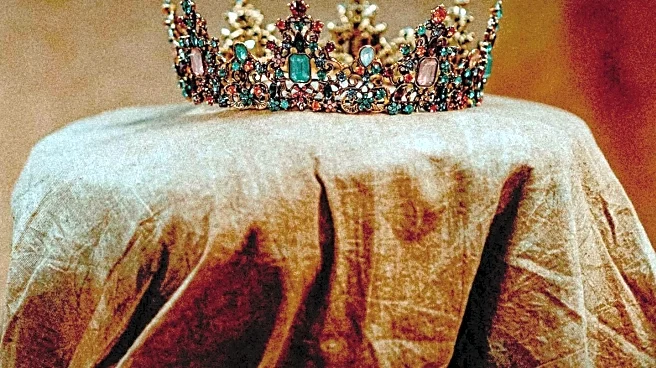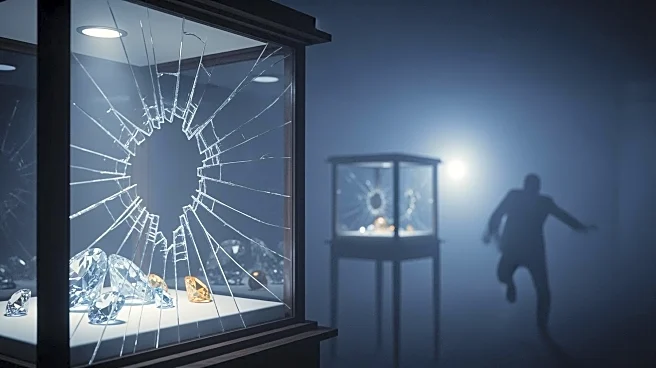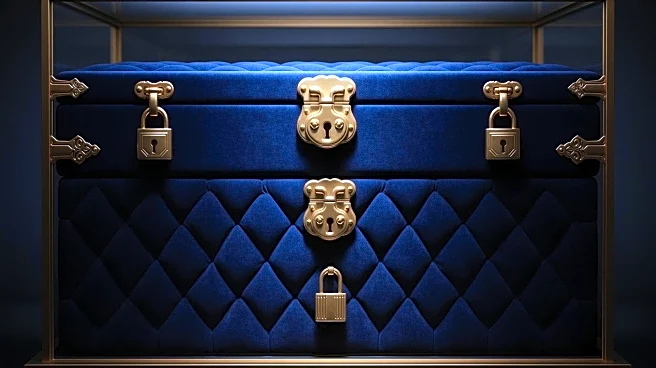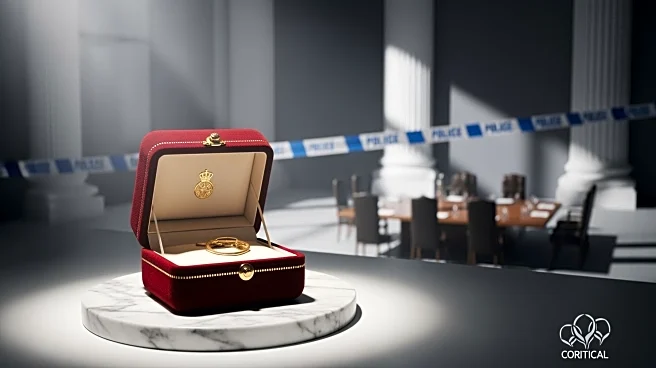What's Happening?
On October 19, 2025, thieves executed a daring heist at the Louvre Museum in Paris, stealing French crown jewels valued at €88 million ($102 million). The theft occurred in a seven-minute raid, targeting
relics from France's imperial history. Despite the museum's security measures, the thieves managed to escape with eight jewels still missing. Authorities have collected over 150 trace samples for forensic analysis, and approximately 100 personnel are involved in the ongoing investigation. The incident has raised concerns about the security of cultural institutions in France.
Why It's Important?
The theft of such high-profile jewels from the Louvre Museum has significant implications for the security of cultural heritage sites worldwide. It highlights vulnerabilities in museum security systems and raises questions about the protection of valuable artifacts. The stolen jewels, with their historical significance, are irreplaceable, and their loss represents a cultural and financial blow to France. The incident may prompt museums globally to reassess and strengthen their security protocols to prevent similar occurrences.
What's Next?
French authorities are intensifying their efforts to recover the stolen jewels, employing forensic analysis and collaborating with international experts. The investigation may lead to increased security measures at museums and cultural institutions across France and potentially worldwide. The case could also result in diplomatic discussions regarding the protection of cultural heritage and the return of stolen artifacts.
Beyond the Headlines
The heist underscores the ethical and legal challenges in the art world, particularly concerning the illicit trade of stolen artifacts. It may lead to discussions on the black market for art and the role of international cooperation in recovering stolen cultural property. The incident could also influence public policy on cultural heritage protection and the allocation of resources for museum security.











